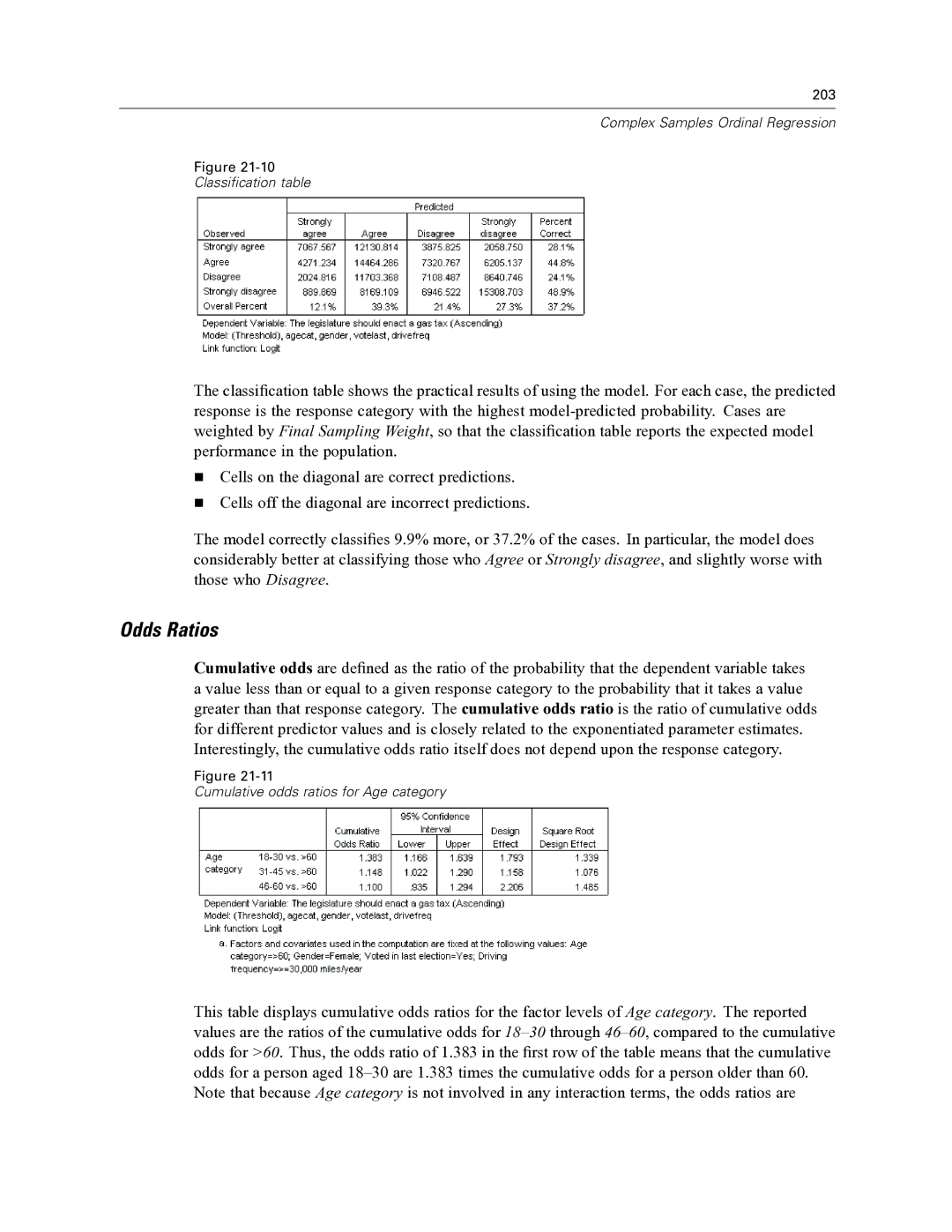
203
Complex Samples Ordinal Regression
Figure
Classification table
The classification table shows the practical results of using the model. For each case, the predicted response is the response category with the highest
Cells on the diagonal are correct predictions.
Cells off the diagonal are incorrect predictions.
The model correctly classifies 9.9% more, or 37.2% of the cases. In particular, the model does considerably better at classifying those who Agree or Strongly disagree, and slightly worse with those who Disagree.
Odds Ratios
Cumulative odds are defined as the ratio of the probability that the dependent variable takes a value less than or equal to a given response category to the probability that it takes a value greater than that response category. The cumulative odds ratio is the ratio of cumulative odds for different predictor values and is closely related to the exponentiated parameter estimates. Interestingly, the cumulative odds ratio itself does not depend upon the response category.
Figure
Cumulative odds ratios for Age category
This table displays cumulative odds ratios for the factor levels of Age category. The reported values are the ratios of the cumulative odds for
